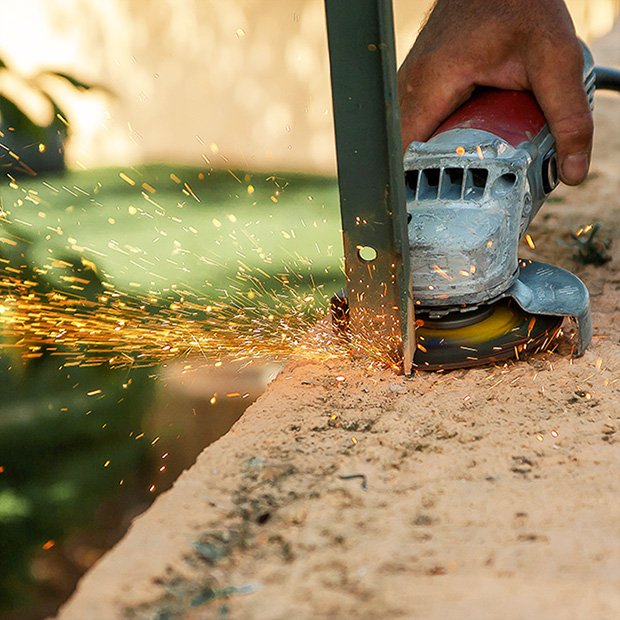Home Improvement And Eye Safety

More than 2.5 million eye injuries occur every year, and half of those injuries happen at home.
The good news is that 90 percent of eye injuries are completely preventable if we follow eye safety instructions and use eye protection!
Take Precautions With Those DIY Projects
We normally associate safety goggles with construction workers, but if you think about it, building a birdhouse to hang in your backyard is a construction project too—and it shares some of the dangers with larger scale ones. Most home improvement projects, from painting the kitchen to building a deck, involve materials or tools that could be hazardous to the eyes.
Even something as simple as securing camping equipment to the roof of the car with bungee cords can have disastrous consequences if the cord snaps. Safer alternatives for your eyes would be low-stretch ratchet straps or simply tying knots.
Polycarbonate safety glasses and face shields are great ways of keeping your eyes safe against flying splinters of wood, drips of paint, or dust. Even lawnmowers and weed eaters can fling tiny rocks or twigs in any direction, so safety glasses would come in handy there as well. Regular glasses are too fragile to offer reliable protection and can actually cause even worse damage if they shatter near the eyes.
Protect Your Eyes From Household Cleaners
Household cleaners such as bleach cause as many as 125,000 eye injuries every year. Take care to follow all safety instructions on your cleaning products, and you might even want to wear those safety glasses to protect against any splashes.
Be Prepared With Eye Injury First Aid
Eye injuries tend to fall into two major categories: foreign body in the eye and foreign body penetration of the eye. When it’s the latter, the best thing to do is immediately seek medical attention. Do not attempt to remove the foreign body and do not touch the eye. Cover the eye with a rigid shield (such as a paper cup taped in place) to keep it from being disturbed, and get to the hospital.
When it’s the former, it’s still best to avoid touching the eye and to seek medical attention in case the damage is more serious than it looks. However, in the short term, the foreign body can often be flushed out with water. Flushing with water for at least 20 minutes is also a good way to neutralize any harmful chemicals splashed in the eyes.
Although this video addresses emergency medical personnel, we can all follow these principles to see what we should do in a first aid situation:
[iframe https://www.youtube.com/embed/-feGwKx-NEE?rel=0 620 349]
Bring Your Vision Health Questions To Us!
If you have any other questions or concerns about eye safety in your home, don’t hesitate to ask us! We want all of our patients to have the knowledge and resources they need so that avoidable eye injuries are never a problem!